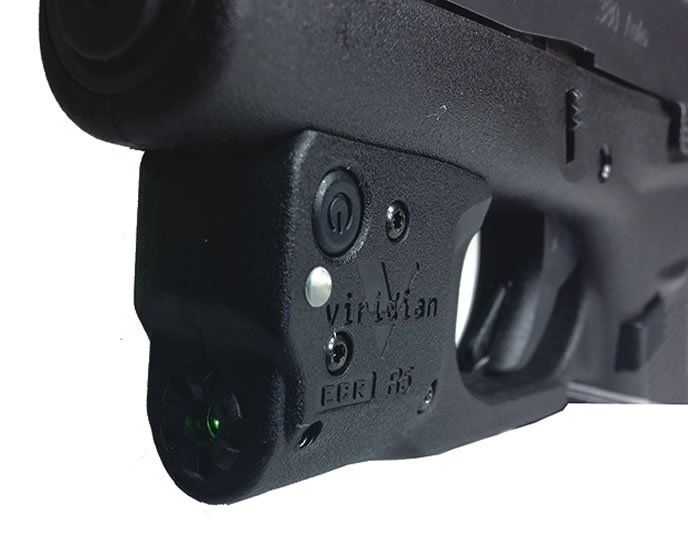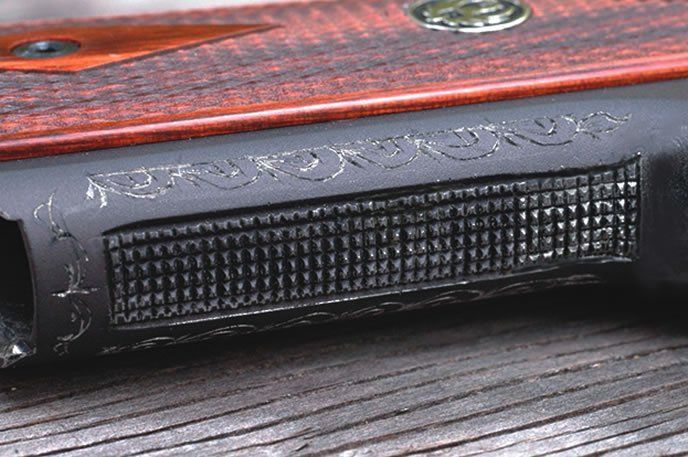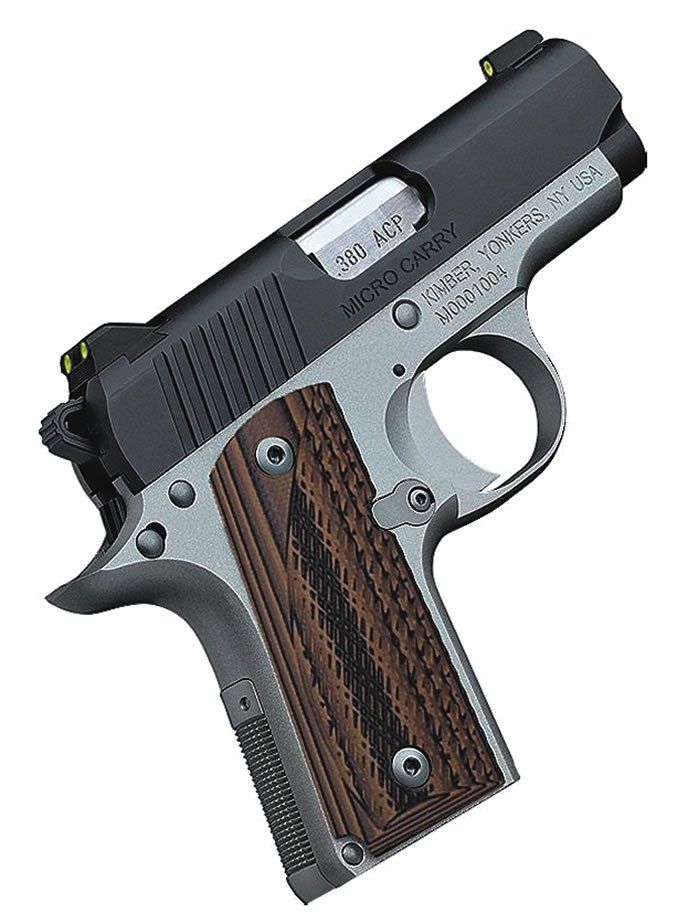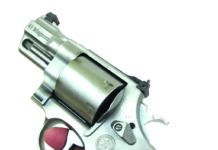
Re “338 Win. Mag. Bolt-Action Duo: Henriksen Versus Winchester,” July 2015
As an old Rochester, New York boy (left when Hillary was elected senator), I can expand on Ray Ordorica’s comments on B&L scopes and mounts. I have owned 50-plus of them.
The BalVar 8a you used is a fine scope, but in my experience, it has one major failing versus the original BalVar 8. When you change power in the 8a, you are rotating the whole ocular assembly. If you do it a lot, slop will develop in the assembly, and the point of impact will change at different magnifications. The original model had a ring that changed just the power. It was far better, as my BalVar 6-24 will attest.
Also, I don’t like the B&L plunger mount. Once it wears a bit, it will not hold zero. The B&L (also Kuharsky Bros.) mounts were much better, but still butt ugly. If you want sleek and rugged with a no-adjustment scope, there are at least two better solutions: a Bueller Micro Dial mount, which are still around; and an S&K mount, which has windage in both bases. You set elevation with shims, which is not as hard as you might think. I mounted a BalTur (post and crosshair) on an early M70 458 using this method. It never lost zero, although you had to shoot it off a standing bench (God bless the Brits!).
Rethroating the Model 70 Winchester for 300-grain bullets might have made sense in Elmer’s day, but bullets have come a very long way since then. Barnes factory ammo pushes a 225-grain TTSX out @2800 fps and shoots flatter than minute-of-elk to 300 yards, and will kill any elk that walks within that ethical range limitation.
Going to all that expense to fix a M70 was, in my honest opinion, a waste of time — mainly due to the 338 Win. Mag. cartridge for big game. My Browning A-Bolt is one of four SHOT Show specials commissioned by Mossy Oak, and it is chambered in 375 H&H with a 26-inch barrel. It will push a Barnes 235-grain TSX @3000 fps, and it shoots as flat as a 180-grain bullet in a 30-06. It is far nicer to shoot than any 338, especially the horrible 340 Weatherby.
Elsewhere in this issue, why anyone would want a snubby 45 ACP is beyond me. My S&W 329 is almost as light, packs a lot more punch, and once you get a fat revolver, the longer barrel is immaterial insofar as concealment goes.
Also, why did you review AR triggers most of us have never heard of? You missed: Geissle, Timney, Rock River, Wilson, CMC, and probably the best of all, the PACT Gold trigger?
Keep up the good work. I really enjoy your publication.
— Larry
Thank you, Larry, for shedding some light on the delightful old B&L scopes. I had suspicions about the plunger mount. I wonder how much one has to use the power adjustment to cause significant wear. My two scopes show no shifting, with the scope solidly bedded when I put sideways pressure on the ocular and turn it. I have seen the Kuharsky mounts, but not the others you mentioned.
About bullet progress, in 1991 I was testing Randy Brooks’ (Barnes Bullets owner) new 300, 350, and 400-grain X Bullets in my 458 in Alaska for him, and reported several problems: one, a slight problem of petal separation; and two, they desperately needed a crimp for the 458. Randy, a good friend, listened, which is one reason why they have crimping grooves today.
Sorry, but no 225-grain bullet has the sectional density of a 300-grain bullet in the same caliber. For extreme-range shooting of any sort, the heavy bullets fly much flatter. Keith proved that many years ago and I have verified it several times myself. That’s an awesome scope on a fine bull gun.
— Ray Ordorica

Which Laser?
I need an opinion: Would you use the Viridian R5-G42 or the LaserMax Guide Rod laser? Please advise. Keep up the excellent work! I was going to purchase the S&W Bodyguard or the Ruger LCP until I read your test report. I will look forward to hearing from you.
— David
Well, we didn’t test them head to head, so I can’t speak to the LaserMax. The Viridian was easy to install and use. Super bright. It’s an A, and there aren’t many items graded A+.
— Todd Woodard

Re “Upgrading Ruger’s Commander,” June 2015
Ray Ordorica made several modifications to a Ruger SR1911 Lightweight. The article mentions checkering the front grip strap in a list of changes, but says nothing more about it. I’m wondering how that turned out. My own gunsmith is hesitant to checker my Ruger SR1911 Lightweight because he is worried that the aluminum frame is too soft. Thanks for a great publication packed with information.
— Stan
The checkering turned out fine. See the nearby photo. I checkered my CCO a few years ago, but wanted coarser checkering on the Ruger to match the width of the existing serrations. It doesn’t look pretty because of the poor job I did with the aluminum blacking compound, but these checkered front straps help greatly in keeping your hand in place on recoil. The aluminum is plenty hard enough.
— Ray Ordorica

Serial Numbers for Guns
Would it be possible for you to include a list of serial numbers on the website for guns when available? It is very time consuming to hunt and peck over the entire internet for individual manufacturers’ serial numbers to look up each gun that a reader may be interested in. If you could provide the serial numbers, it would greatly reduce the time it takes readers to research specific guns.
— Arlie
You mean stock numbers or catalog numbers, not serial numbers. But you are 100% right, and when we can find them, we try to include them, though it’s a more recent addition to our naming conventions — within the last few years — so some of the online records may not have the data in their listings. Sometimes, however, it’s not easy to find the stock numbers, such as with the Kimber Micro Carry Advocate (shown above) in this issue. Some makers just don’t put the numbers out in the open where we can get them, or the numbers change.
— tw
In My Experience
I enjoy your magazine, and I do learn from your information about guns and other products that I don’t have time to test myself. I have a pistol and rifle range in Dayton, Tennessee, between Chattanooga and Knoxville. I shoot in excess of 300 rifles a year for other people, some because I have mounted a scope for them, but many because they want to make sure their guns are ready for hunting season. Most people don’t understand that not all rifles are accurate — in fact most do not have what I call “Pie Plate Accuracy.”
When you test three different rifles of the same caliber and rate the rifles by predetermined standards, your readers may get the impression that if they buy that model they will get the same performance. Past experience says we have a problem. Most gun manufacturers build guns that don’t get shot until the buyer takes it home and shoots it. Most gun manufacturers will tell you that a 2-inch group at 100 yards is acceptable, and for the most part the buyer will accept that. I don’t, and the people who come to my range usually leave with a better understanding about rifle accuracy, marksmanship, and the limits that they impose on themselves with a gun that, at best, will shoot an 8-inch group at 400 yards.
Unlike your rifle tests that compare and rate one model in one caliber, I rate gun manufacturers. I can tell you from experience which manufacturers make accurate guns, ones that will provide the accuracy to make a one-shot kill on a whitetail deer at 400 yards or hit a hog in the ear at 100 yards.
That’s not to say that all the guns that one company makes have poor accuracy; even the worst companies make some tack drivers. But would you spend your money on a gun made by a company that has a track record of producing 20% of their guns that will shoot minute-of-angle groups or with a company that produces 70% of their guns that shoot that well? Some rifle companies even have a minute-of-angle guarantee.
Marksmanship is a perishable skill. One must practice regularly to maintain the skill to attempt longer shots. Why would anyone want to take a gun into the field that, off a bench under ideal conditions, can do no better than Pie Plate Accuracy?
You may also want to point out that some rifles and some ammunition don’t get along. Your readers may want to consider shooting what their gun likes instead of what they like. I have read your bullet tests where you shoot different bullets into different media. It was great information, but what if my rifle won’t hit a pie plate with the best choice, or the second or third choice? If you take two rifles off the assembly line back to back, identical, same caliber, same everything, one likes the bullet that you rated number one, but the other rifle likes the only bullet that failed all of your tests. Bullet placement is more important than bullet size or construction. Shoot what the gun likes, if you can find it.
I will try to write you about rifle scopes in the future. I test them all from inexpensive to really expensive and I will try to give some experience that may be helpful.
— Bill Newman
The Ridge
Hey Bill: We appreciate your insights. We try to describe the elements of good gun accuracy in our tests (lock up tightness, frame-to-slide fit, bedding and pillar use on rifles, free-floating barrels, good triggers, and so on), and a lot of the readership asks important questions after the reviews that show they understand the important aspects of gun performance. But, ultimately, every gun is a one-off, and the only sample that matters is the gun in your hands.
A lot of the mail I get is from people who ask for reviews before they buy a particular gun, because they trust us to point out accuracy and function problems they are likely to encounter with a model. If we can make a reader aware of a potential issue, then he or she can buy with eyes wide open and address those issues before they spend their hard-earned money. I look forward to visiting further.
—tw






























